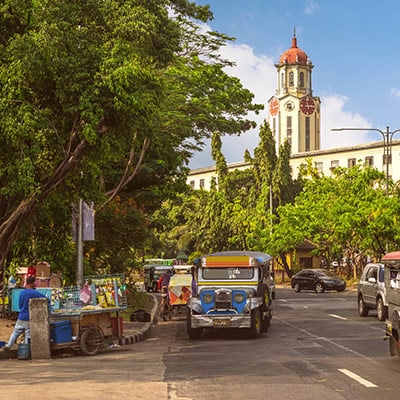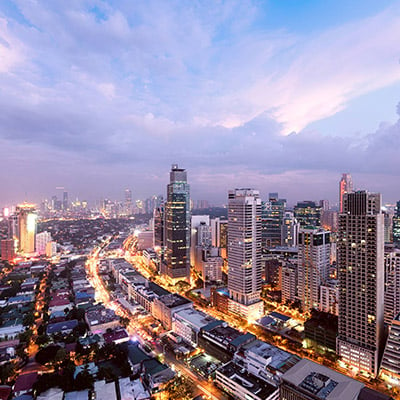In recent weeks, there appears to be a welling up of commentaries, particularly on social media, about corruption in our government. There seems to be a growing perception that this disastrous practice is getting worse in terms of both its widening spread and the increasing scale of the amounts involved. This observation aroused an interest in me to analyze and try to portray in an understandable way the broad effects of corruption in the Philippine economy.
Indeed, corruption in government has been prevalent in the Philippines for so long and appears to continue undiminished in the foreseeable future. I will not consider, though, that this lamentable practice is a part of Philippine culture, as others would do, for the simple reason that it is practiced by only a “few”. I mean “few” in relation to the number of perpetrators as compared to the entire Philippine population. Corruption is actually a crime that regrettably goes generally unpunished. I recognize, though, that others may claim that for the fact that a much greater part of the Philippine population tolerates the perpetration of this criminal practice makes the practice of corruption a part of Philippine culture. I would agree if such toleration is unforced. But it is not. The perpetrators hold considerable power. This power exudes intimidation and threat of retribution that greatly inhibits the concerned but unorganized citizens from taking appropriate action to challenge the perpetrators.
Estimate of amount of corruption
In the latest Corruption Perception Index released in September 2023 by the Berlin-based Transparency International, the Philippines is ranked 115 among 180 countries as being perceived to have a higher prevalence of corruption. While the country is not the most corrupt, it is more corrupt than 114 other countries out of 180.
In a paper presented by an officer of the Department of Justice at the 13th Regional Seminar on Good Governance for Southeast Asian Countries in Tokyo in 2019, he stated that the amount of corruption in the Philippines at the national level was then estimated at 20% of the annual national budget. He applied that proportion to the 2015 and 2016 national budgets to show the magnitude of the resulting amounts. If we apply the same proportion on the current 2024 national budget, the amount of corruption at the national level currently translates to an estimated amount of about ₱1.6 trillion. And that estimated amount relates only to corruption at the national government level. If we include estimates of similar corruption at the level of the LGUs and bribery amounts at both national and local levels, the overall total will certainly be gargantuan.
Types of corruption
Corruption in government may be classified in a number of ways. For purposes of this commentary, I will classify them based on their nature, namely: overpricing; unrestricted appropriated funds; and bribery at both the national and local government levels.
Overpricing relates to infrastructure and other construction contracts; purchases of equipment, materials, and supplies; and procurement of labor for the use of the national and local governments, including that of the various institutions under their respective jurisdictions. I define unrestricted appropriated funds or, simply, unrestricted appropriations as composed of what are commonly known as pork barrel, intelligence funds, and other intentionally mislabelled funds appropriated in both the national budget and local government budgets.
Overpricing results in a complete loss of government funds equivalent to the amount of the overprice, while unrestricted appropriations result in a partial loss of government funds to the extent of the amount not used for the benefit of the Filipino people plus the overpricing of those goods procured for the benefit of the citizens.
Bribery is different in the sense that these are in the form of money or valuable goods owned by citizens, private businesses, and other organizations and given to government officers and personnel, under coercion or not, to facilitate or expedite the release of required government permits, licenses, and other documentary requirements and approvals of all kinds. It also includes awarding of franchises and rights for exploitation and use of national resources and privileges; and favorable court decisions and regulatory rulings to deserved or undeserved persons, activities, and pending cases. While these corrupt practices do not result in direct loss of existing government funds, some of these practices may result in loss of government revenue in the form of exemption from or reduced amounts of legally collectible taxes, duties, and fees in exchange for the bribe money.
Economic effects of corruption on government programs and activities
In sum, corruption in government results in loss of government funds in the cases of overpricing and portions of unrestricted appropriations, and loss of revenue in some cases of bribery. On the basis of the estimated rate of corruption mentioned earlier, the total amount of these losses of government funds and revenue on an annual basis is huge. When put together, the recurring total annual amount could have been deployed in large-scale programs that have long-term and wide beneficial effects on the nation’s economic growth and development, such as in large infrastructures that provide connectivity within and among the country’s various islands (roads, railways, bridges, sea ports, airports, and similar others); rehabilitation of the education system; substantial reduction of poverty; a more expansive health care system; and other urgently needed economic and social development programs.
When broadening the base estimate of losses from corruption referred to earlier for reasons explained thereafter, the expanded annual estimate would be significantly higher than the ₱1.6 trillion current annual estimate mentioned before. By multiplying whatever higher amount that may come to mind by any number of years, it provides a result that gives us a picture of the enormity of the opportunities for continuous economic growth that we lost during the past many years. And much more than this, we continue to suffer such losses annually, and there seems to be no end in sight.
There is an additional unfavorable economic effect in the case of overpricing, especially in infrastructure contracts. To enable the corruption, some or much of the completed constructions will generally be of a quality level lower than what is specified in the contract. As a result, the completed infrastructure would provide benefits only for a much shorter period of time than planned and will necessarily entail large amounts of opportunity cost during the period of necessary repairs and replacements. Moreover, such early repairs and replacements will necessitate a premature round of sourcing the required funding. As a result, this premature funding crowds out new economic development initiatives, which clearly further delays in no small measure Philippine economic growth. In addition, this condition creates a cycle that goes on indefinitely under present circumstances.
There are similar effects in the case of overpricing in the government procurement of equipment, materials, supplies and labor if the level of quality of the procured goods and services is not in accordance with specified quality levels.
In the case of unrestricted appropriations, whatever portion is spent for the benefit of the Filipino people, it is spent in a scattered way in relatively small amounts. The power of using that money in the aggregate to fund large-scale economic development programs that provide much wider and longer-term benefits to the nation is forever lost.
Economic effects of using corrupt money
On the part of the corrupt persons, they obtain additional wealth for their own personal benefit and disposal. To the extent that they deploy this additional wealth in consumption, investments, and savings in the Philippines, such deployment would offset to some extent the harmful effects of the loss of government funds and revenue. However, based on general observations, much of this corrupt money is not spent in the Philippines but instead is used to purchase foreign, especially expensive, goods and to transfer some portion abroad in the form of foreign currency. In those cases, no benefit accrues to the Philippine economy at all, except maybe for some retail sale markups and applicable payment of local taxes and fees, which sum up to a relatively small amount.
Other effects on the national economy
The huge fund losses resulting from corruption have required the Philippine government to borrow much more than would have been necessary. Such additional borrowings result in a higher debt ratio (to GDP) that in turn results in a lower international credit rating than would otherwise be and consequently entails a higher interest cost.
Of course, the government may choose to retain that level of borrowings and, without corruption, spend the additional borrowings for expenditures on large-scale programs that have long-term and wide beneficial effects on the nation’s economic growth and development, as explained earlier.
Conclusion
Clearly, widespread corruption has caused the Philippines to lose great opportunities continuously over a long period of time to become a more economically developed country. Equally sadly, the country will continue to lose such great opportunities in the foreseeable future.
I purposely confined myself to analyzing the economic effects of corruption in government, except for a few comments in passing that corruption, in my opinion, is not a part of Philippine culture.
I avoided commenting on the underlying issue of righteousness regarding the practice of corruption. I do not think I have the right to suggest to anyone to be like Mother Teresa.
As published in BusinessWorld and The Manila Times, dated 25 November and 02 December 2024




